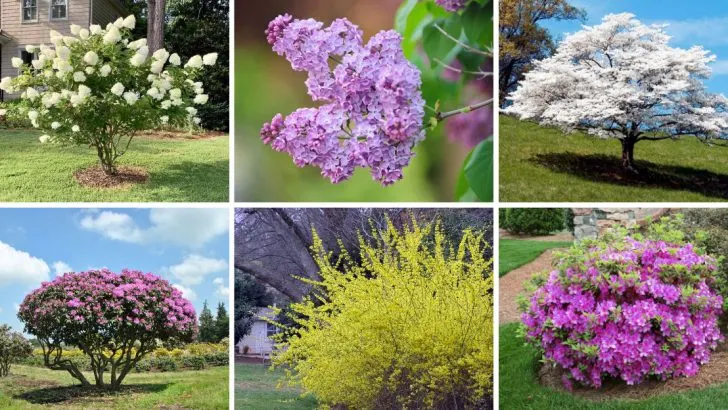Spring is the season that brings your garden to life, and one of the easiest ways to make a big impact is with flowering trees and shrubs. Their blooms not only brighten up your yard but also provide beautiful fragrance and a vibrant display of color. Plus, they attract pollinators, adding to the natural beauty of your garden. With so many options to choose from, it’s about finding the right ones to fit your space and style.
In this article, we’ll highlight 26 stunning flowering trees and shrubs that will make your spring garden stand out. From the delicate petals of lilacs to the bold colors of magnolias, these plants bring seasonal beauty and charm. If you’re looking to enhance your outdoor space, these flowering favorites will give you all the inspiration you need to create a garden you’ll love.
Cherry Blossom
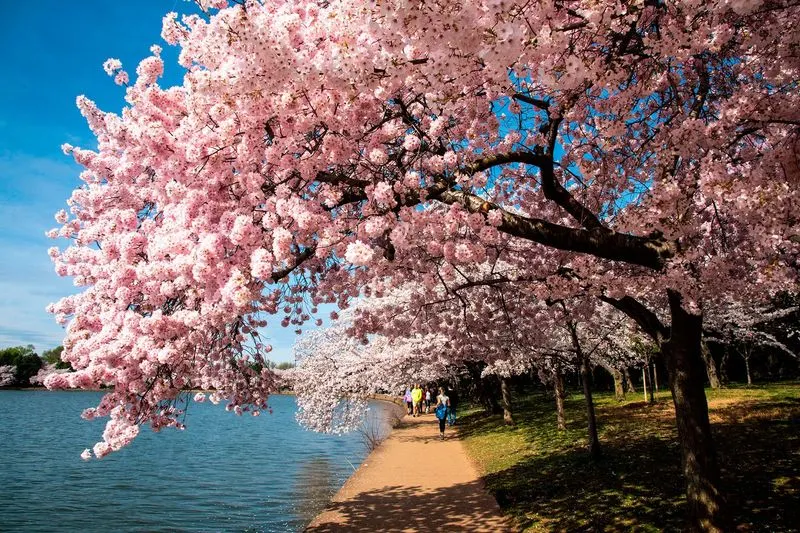
Cherry blossoms are iconic symbols of spring, celebrated for their delicate pink flowers. These trees create a stunning display, often forming breathtaking canopies over gardens and parks.
Perfect for small gardens, cherry blossoms thrive in well-drained soil and enjoy full sun exposure.
Their blooms are short-lived but leave a lasting impression, heralding the arrival of spring with elegance. Cherry blossom festivals around the world draw crowds who admire their fleeting beauty.
Planting a cherry blossom tree brings a touch of Japanese charm to your garden, inviting admiration and tranquility. Witnessing their annual bloom is a reminder of nature’s ephemeral beauty.
Magnolia
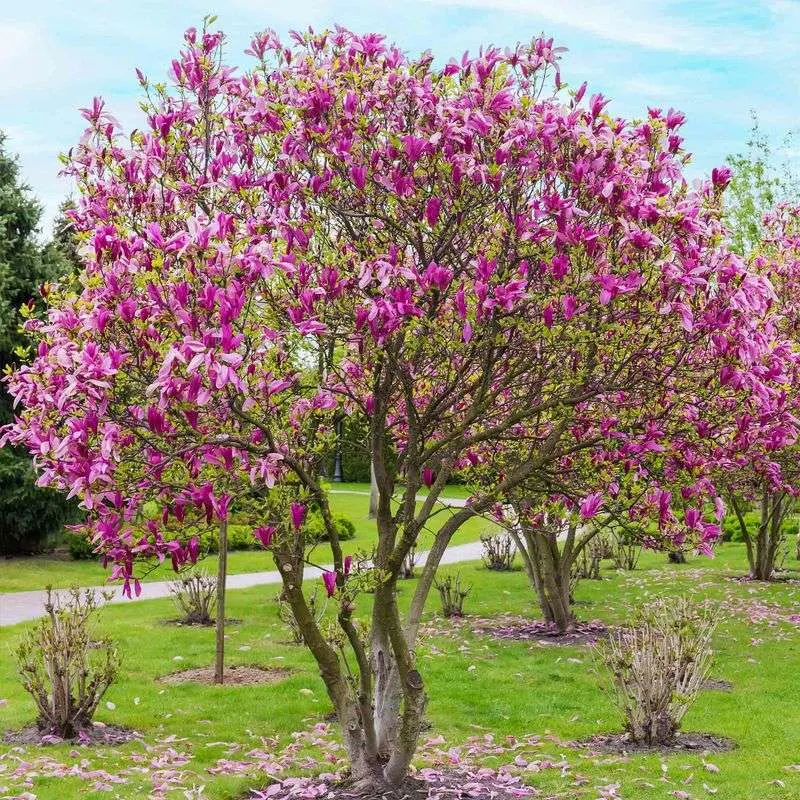
Magnolias are one of the most cherished flowering trees, known for their large, fragrant blooms. Their unique goblet-shaped flowers add a touch of elegance to any garden.
Varieties like the saucer magnolia and star magnolia offer a range of colors from pure white to deep pink.
Magnolias can grow in various climates, though they prefer rich, slightly acidic soil. Their blooms appear in early spring before the leaves unfurl, creating an ethereal look.
Regular pruning helps maintain their shape and encourages more blooms. Whether as a standalone feature or part of a mixed border, magnolias captivate with their beauty and grace.
Dogwood
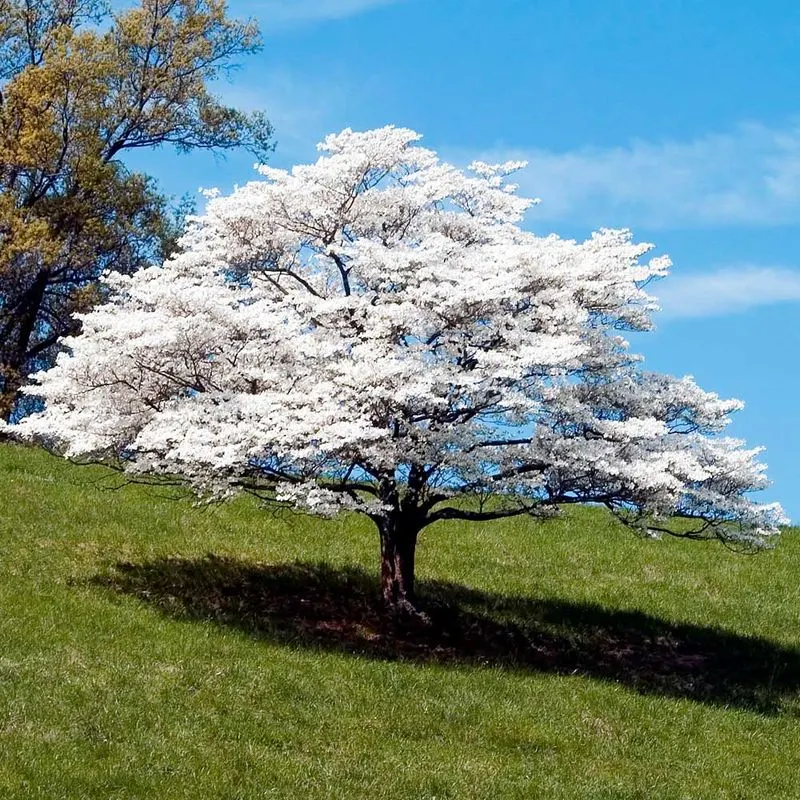
Dogwoods are beloved for their elegant, four-petaled flowers and vibrant autumn foliage. These trees make excellent focal points in gardens, providing year-round interest.
Their flowers range from white to pink and even red, creating a picturesque display.
In spring, dogwoods burst into bloom, offering nectar to pollinators. They thrive in partial shade and well-drained soil, making them versatile additions to diverse garden settings.
Dogwoods also produce attractive red berries that appeal to birds. With their graceful form and seasonal beauty, dogwoods are a timeless choice for enhancing any landscape.
Lilac
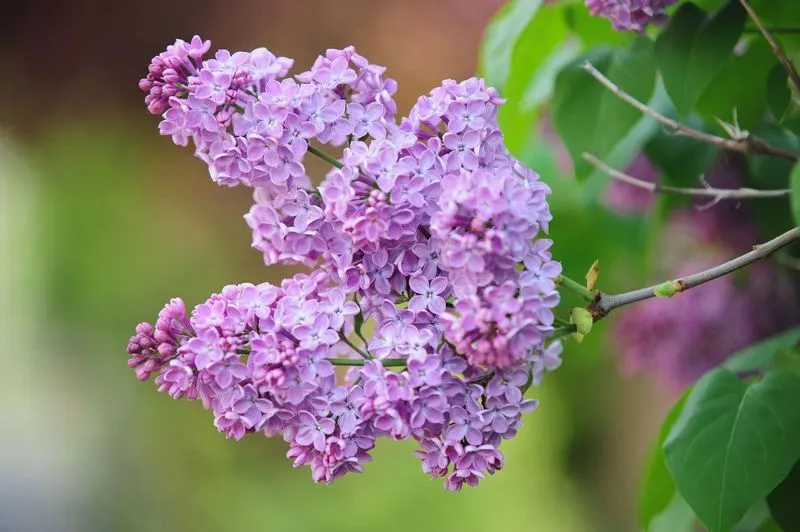
Lilacs are cherished for their intoxicating fragrance and charming clusters of purple, pink, or white flowers. These shrubs are ideal for cottage gardens, bringing a touch of romance and nostalgia.
Their blossoms attract pollinators, making them a favorite among gardeners.
Lilacs prefer well-drained soil and plenty of sunlight to thrive. Regular deadheading encourages more blooms, and pruning after flowering helps maintain their shape.
Planting lilacs near windows or patios allows you to enjoy their sweet scent indoors and out. Their lush blooms and delightful aroma make lilacs a must-have for any spring garden.
Rhododendron
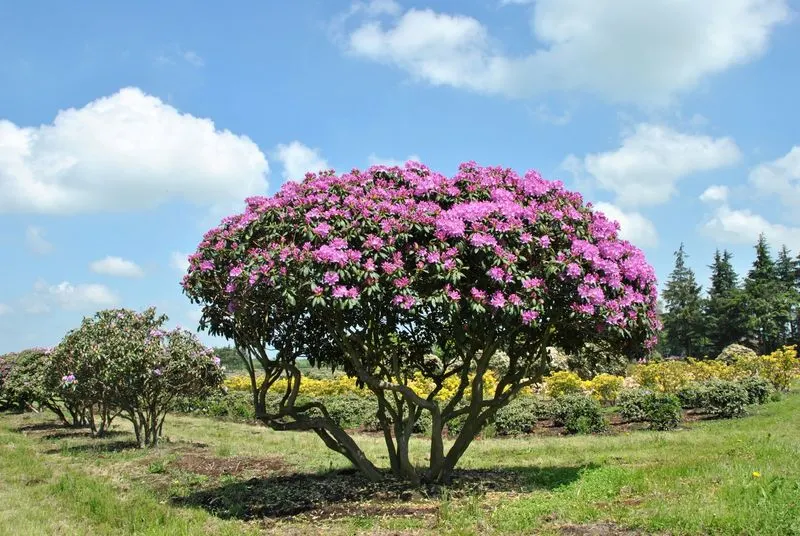
Rhododendrons are celebrated for their showy, cluster-like blooms and evergreen foliage. These shrubs excel in woodland gardens, where they can bask in dappled light.
Their flowers come in various shades, from soft pastels to bold, vibrant hues.
Rhododendrons prefer acidic, well-drained soil and benefit from mulching to retain moisture. Planting them in sheltered areas protects the blooms from harsh winds.
Their lush foliage provides year-round interest, while their spring flowers create a striking visual impact. With proper care, rhododendrons can become long-lasting cornerstones in your garden’s design.
Azalea
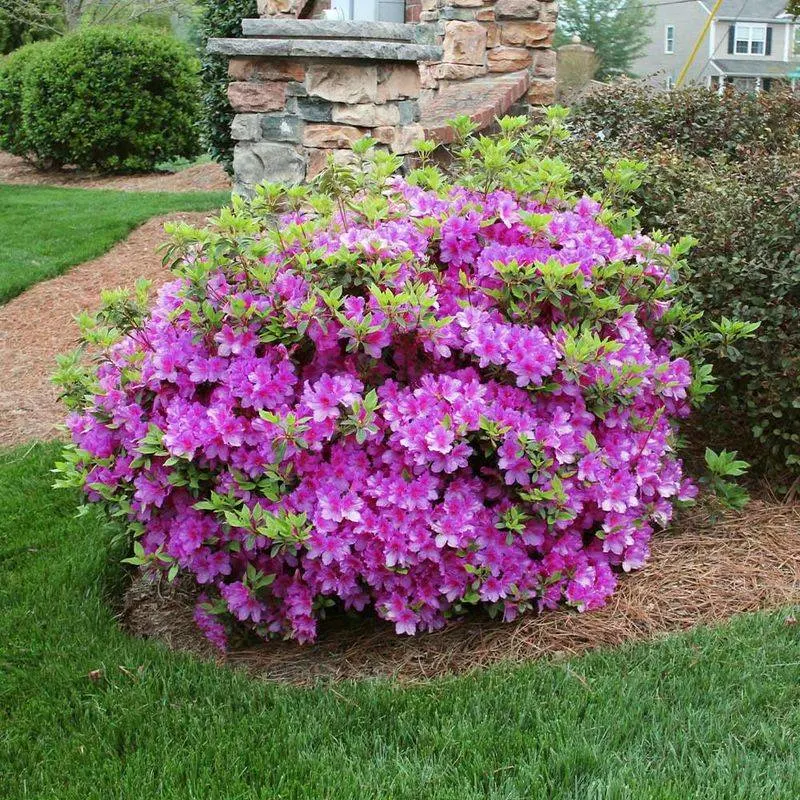
Azaleas are treasured for their abundance of vibrant blooms that can transform any garden into a colorful paradise. These shrubs are part of the rhododendron family and boast a wide variety of colors, including pink, red, and white.
They thrive in acidic soil and require partial shade to protect their delicate flowers. Azaleas are perfect for garden edges and mixed borders, adding layers of texture and color.
Regular watering and mulching help maintain their health and vigor. Their stunning blooms make azaleas a favorite among gardeners seeking to create a lively and inviting outdoor space.
Forsythia
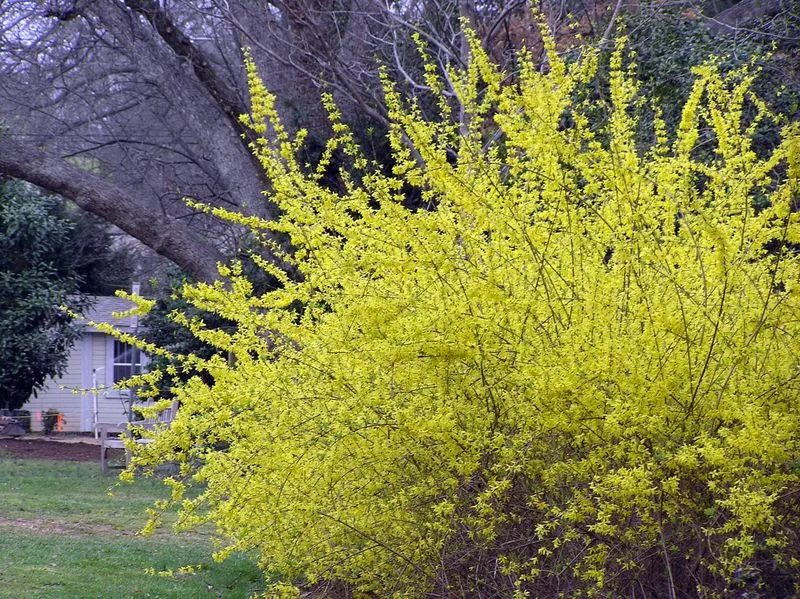
Forsythias announce the arrival of spring with their cheerful yellow flowers. These deciduous shrubs are known for their vigorous growth and abundant blooms.
They thrive in a variety of soil types and conditions, making them versatile additions to any garden.
Forsythias are excellent for hedges or as standalone specimens, providing early spring color to landscapes. Pruning after flowering helps maintain their shape and encourages more blooms.
Their brilliant yellow flowers brighten up gardens and provide early nectar for pollinators. Forsythias are a classic choice for gardeners looking to inject a burst of sunshine into their spring gardens.
Camellia
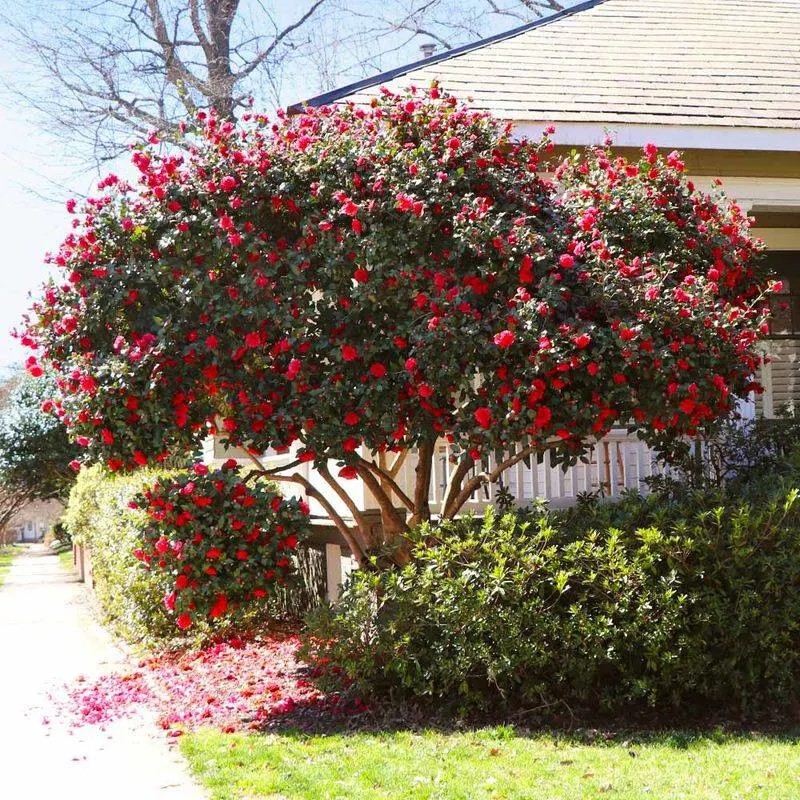
Camellias are renowned for their exquisite, rose-like blooms and glossy evergreen leaves. These shrubs offer elegance and charm, blooming from late winter into spring.
With hues ranging from pure white to deep red, camellias add sophistication to gardens.
They prefer acidic, well-drained soil and partial shade. Regular watering and mulching are key to maintaining their vigor.
Camellias can be featured in mixed borders or as standalone specimens, showcasing their stunning blossoms. Their long-lasting flowers and lush foliage make camellias a prized addition to any garden, offering beauty that spans multiple seasons.
Crabapple
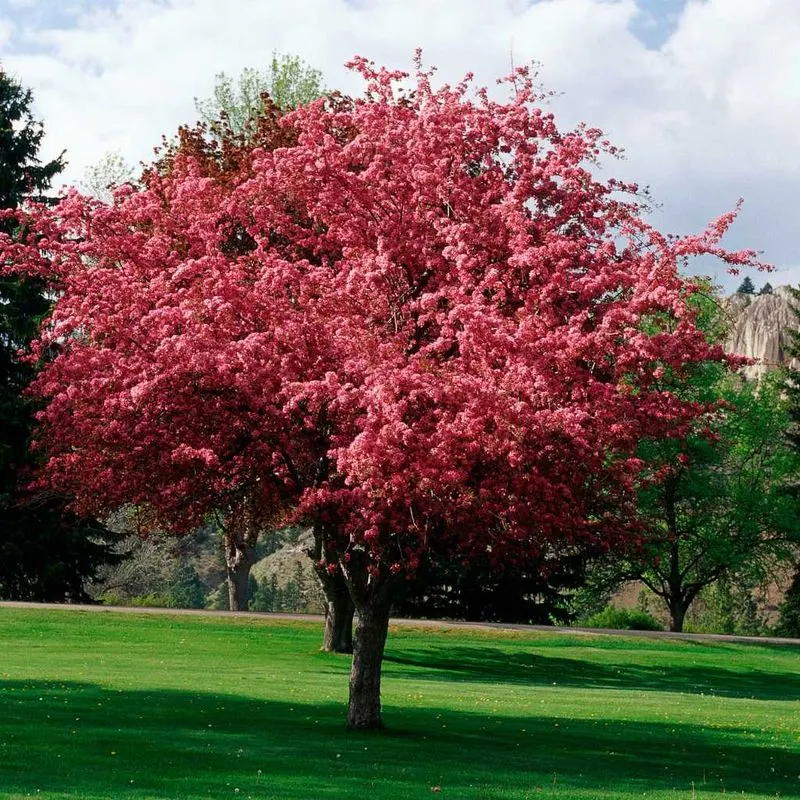
Crabapple trees are adored for their profuse spring blossoms and colorful fruit. These trees offer shades of pink, white, and red, creating a vibrant display in gardens.
Their small, ornamental fruits attract wildlife, adding ecological value to your garden.
Crabapples thrive in well-drained soil and full sun, making them suitable for a range of garden styles. Their compact size makes them ideal for small to medium gardens.
In addition to their beauty, crabapples provide seasonal interest with colorful foliage and fruit. Planting a crabapple tree brings a dynamic element to your garden’s design.
Wisteria
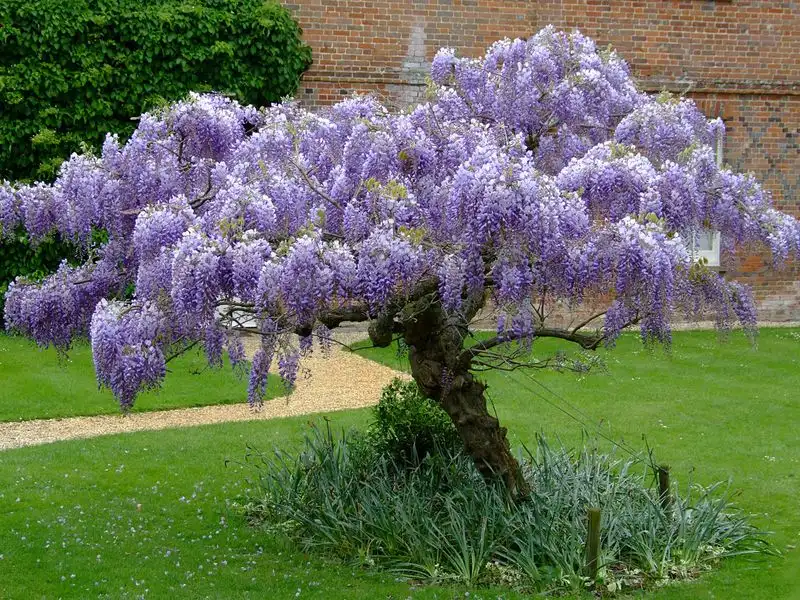
Wisteria is a stunning climbing plant known for its long, cascading clusters of fragrant purple flowers. This vigorous grower can cover arbors, pergolas, and fences, creating a magical, romantic atmosphere in gardens.
Wisteria prefers full sun and well-drained soil to thrive. Regular pruning is essential to control its growth and encourage blooming.
Its enchanting flowers make wisteria a focal point in any garden, attracting pollinators and admiration alike. Whether draping from a trellis or winding around columns, wisteria adds a touch of elegance and whimsy to your outdoor space.
Hydrangea
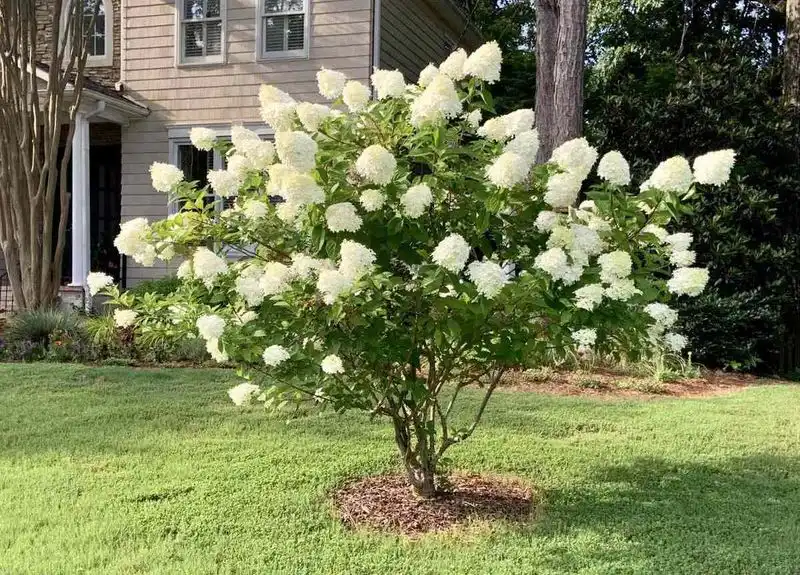
Hydrangeas are beloved for their large, showy flower heads and versatility in gardens. These shrubs offer a range of colors, from deep blues to soft pinks, depending on soil acidity.
Their lush blooms create a striking visual impact, perfect for borders and hedges.
Hydrangeas thrive in well-drained soil and benefit from morning sun and afternoon shade. Regular watering and mulching help maintain their health.
Pruning in late winter or early spring encourages vigorous growth and more blooms. Hydrangeas’ ability to change color with soil pH adds an interactive element to gardening, making them a fascinating choice for enthusiasts.
Weigela
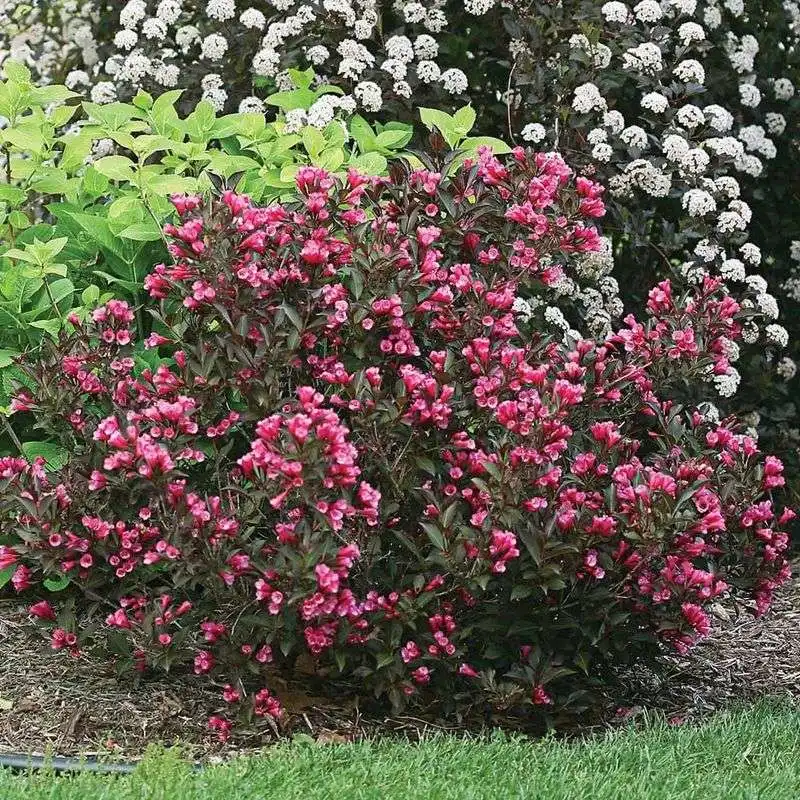
Weigelas are charming shrubs known for their tubular flowers and arching branches. Blooming in late spring, they offer a burst of color with pink, red, or white flowers.
Weigelas are excellent for borders, hedges, or as standalone features.
They prefer well-drained soil and full to partial sun exposure. Regular pruning after blooming encourages a tidy shape and more flowers.
Weigelas attract hummingbirds and butterflies, adding wildlife interest to gardens. With their vibrant blooms and ease of care, weigelas are a delightful addition to any garden looking for a splash of color and lively activity.
Lilac Hibiscus
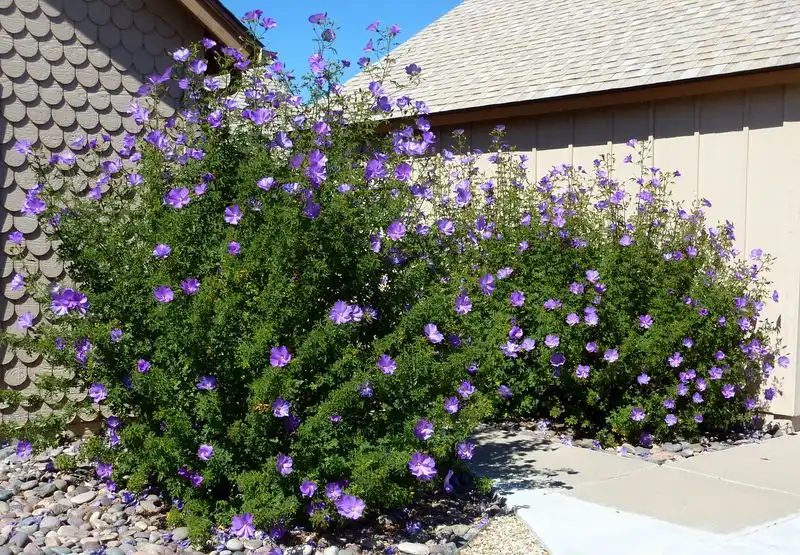
The lilac hibiscus is a tropical shrub celebrated for its striking purple flowers. Ideal for warm climates, this shrub brings exotic flair to gardens.
Its blooms are large and eye-catching, attracting pollinators with their vibrant colors.
Lilac hibiscus prefers full sun and well-drained soil. Regular watering and fertilization ensure healthy growth and abundant flowering.
These shrubs can be used as focal points or as part of mixed tropical plantings. Their dramatic blooms and lush foliage make lilac hibiscus a captivating choice for gardeners seeking to create a tropical paradise.
Spirea
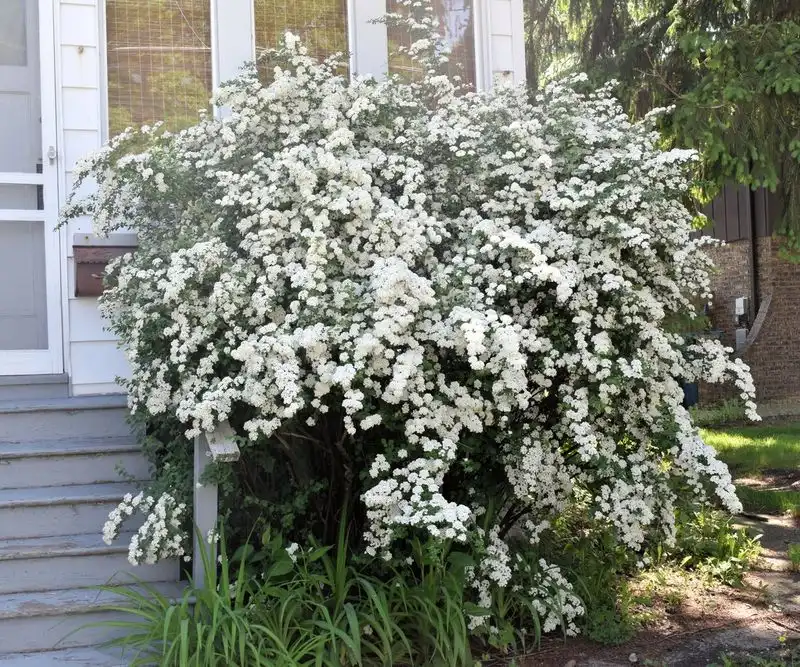
Spireas are versatile shrubs known for their profuse clusters of small flowers. Blooming in late spring to summer, they offer colors ranging from pink to white.
Spireas are low-maintenance and ideal for borders, hedges, or mass plantings.
They thrive in full sun and well-drained soil, requiring minimal care once established. Pruning after flowering encourages more blooms and keeps them tidy.
Spireas attract pollinators, adding ecological value to gardens. Their adaptability and charming blooms make spireas a popular choice for gardeners looking for reliable, easy-care plants that enhance any landscape with color and texture.
Snowball Bush (Viburnum)
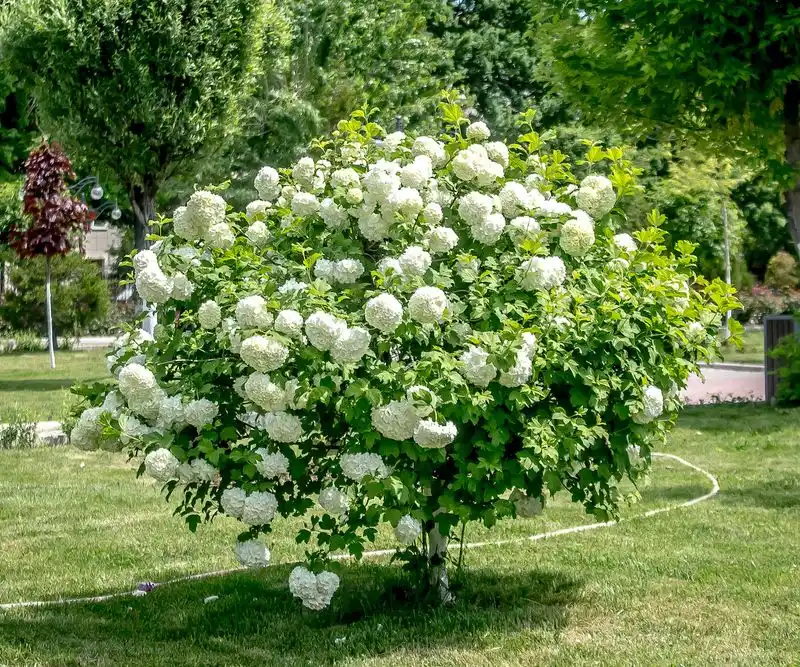
The snowball bush, or viburnum, is famed for its large, round clusters of white flowers resembling snowballs. These shrubs bloom in late spring, adding a touch of whimsy to gardens.
Their lush foliage provides a green backdrop for the striking flowers.
Viburnums thrive in well-drained soil and full to partial sun. They require regular watering and benefit from mulching to retain moisture.
Ideal for hedges, borders, or as standalone specimens, viburnums offer seasonal interest with their flowers and colorful autumn foliage. Their unique blooms and robust growth make them favorites among gardeners seeking visual impact.
Flowering Quince
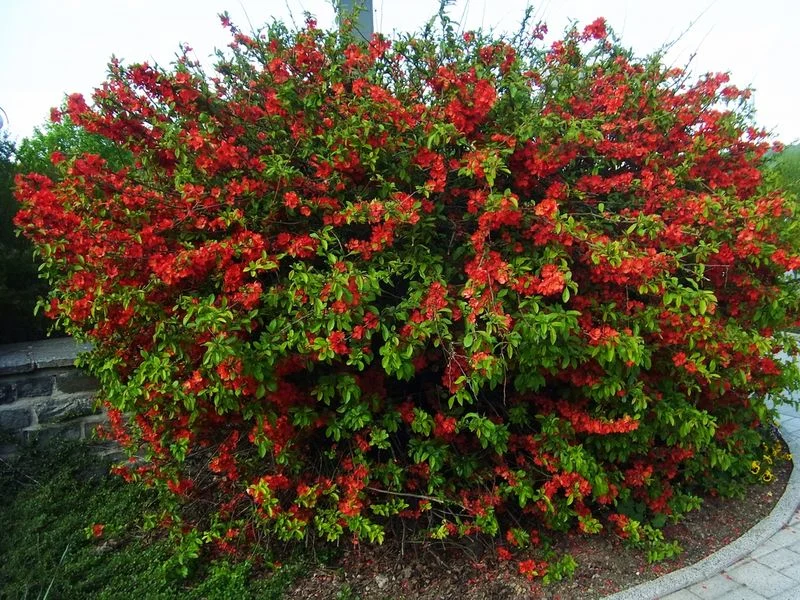
Flowering quince is a versatile shrub known for its striking red, pink, or orange blooms. These early spring flowers bring bold color to gardens, often appearing before the leaves.
Flowering quince is ideal for hedges, borders, or as standalone features.
They thrive in well-drained soil and full sun, requiring minimal maintenance. Pruning after flowering helps maintain their shape and encourages more blooms.
Flowering quince also produces small fruits that attract wildlife. With their vibrant flowers and resilience, flowering quince is a valuable addition to any garden looking for early spring interest.
Kerria Japonica
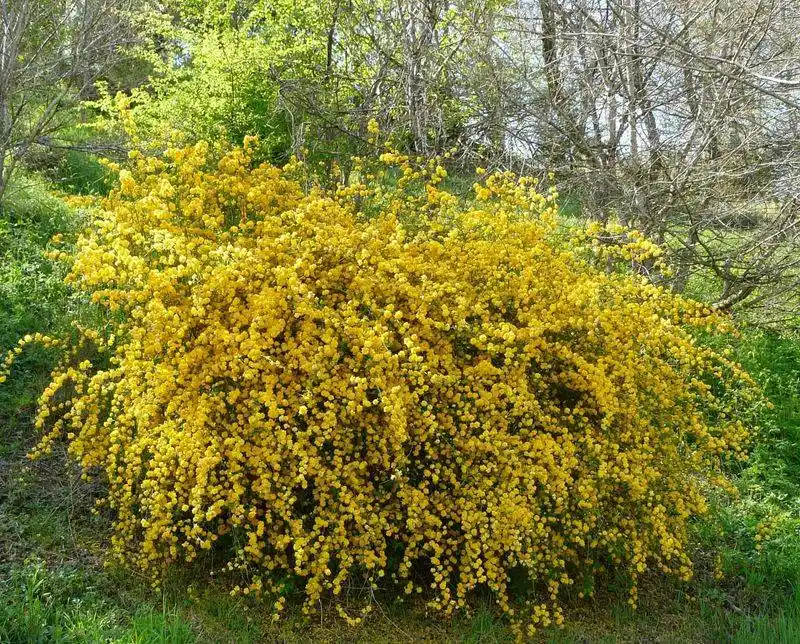
Kerria japonica is a delightful shrub known for its bright yellow, pom-pom-like flowers. Blooming in late spring, it brings a burst of color to shady garden areas.
This deciduous shrub is ideal for woodland gardens, providing contrast against lush greenery.
Kerria thrives in well-drained soil and dappled shade, requiring minimal care. Regular pruning after flowering encourages healthy growth and more blooms.
Its cheerful flowers add a playful touch to gardens, attracting pollinators. Kerria japonica’s vibrant color and ease of care make it a charming choice for gardeners seeking to brighten up shaded spaces.
Sweet Mock Orange
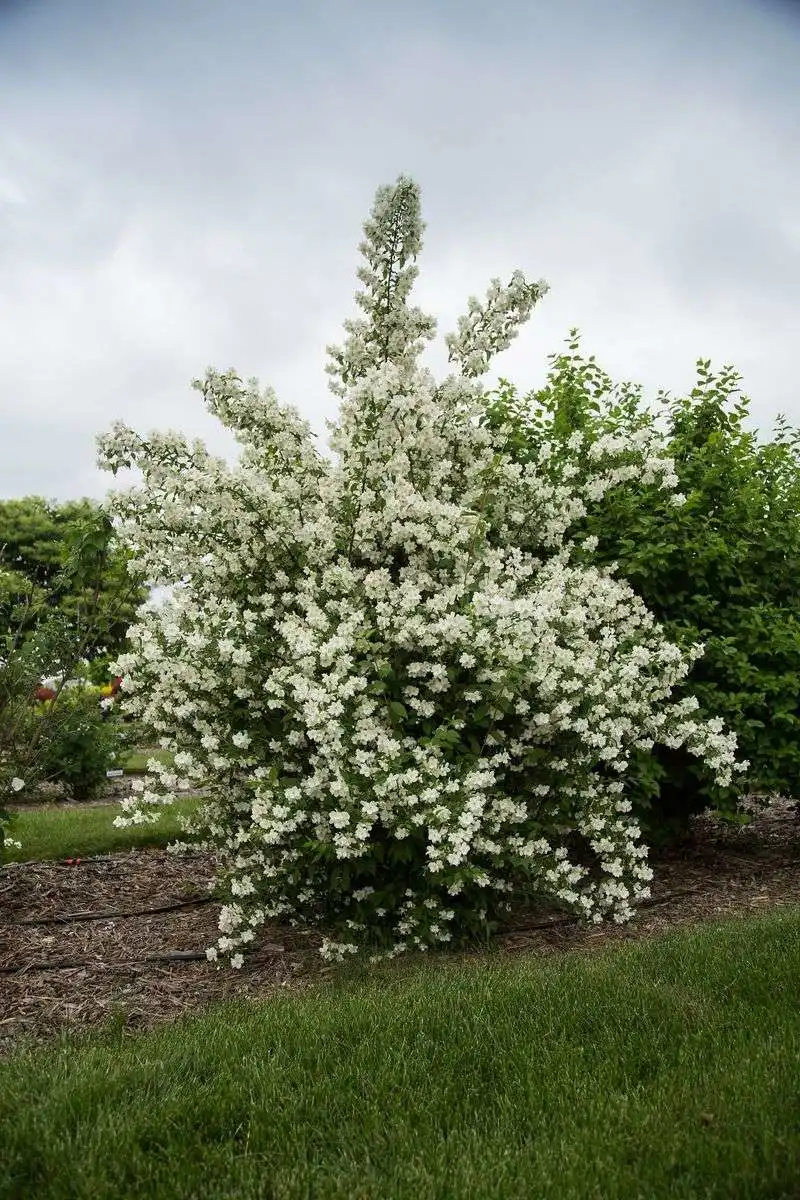
Sweet mock orange is adored for its fragrant white flowers and lush, green foliage. Blooming in late spring to early summer, it adds elegance and a delightful scent to gardens.
This deciduous shrub is perfect for borders, hedges, or as a standalone feature.
Sweet mock orange thrives in well-drained soil and full sun to partial shade. Regular watering ensures healthy growth and abundant blooms.
Pruning after flowering helps maintain its shape. Its enticing fragrance and beautiful blooms make sweet mock orange a favorite for gardeners looking to create a romantic, sensory-rich outdoor space.
Butterfly Bush
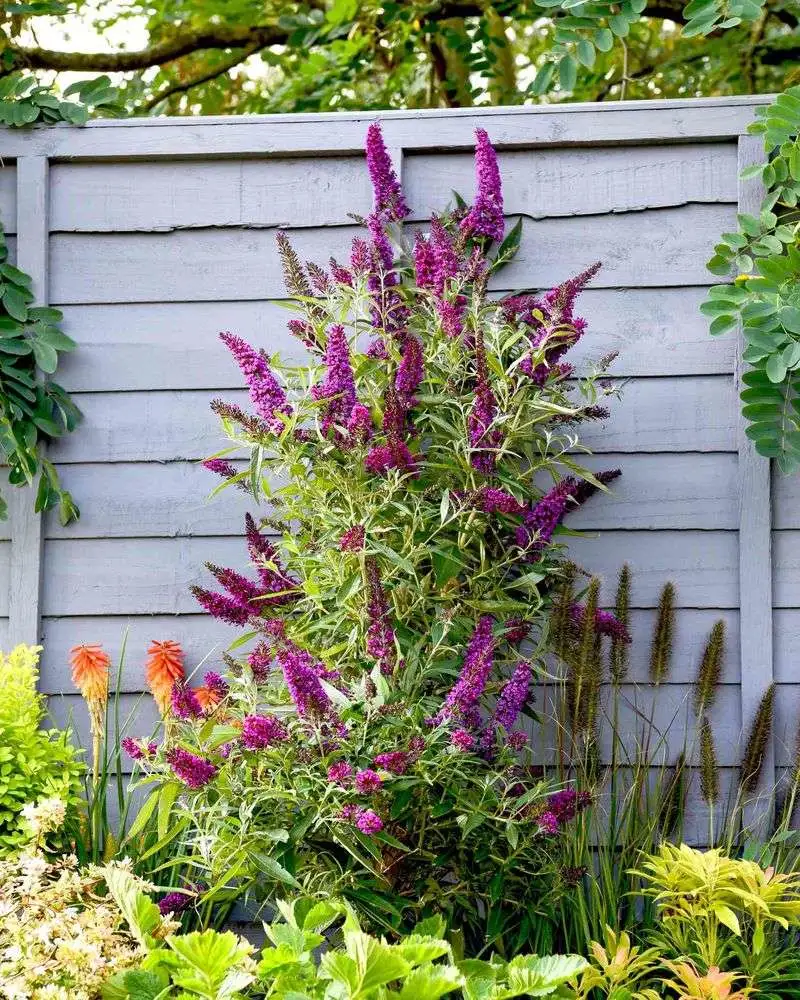
Butterfly bushes are loved for their long, cone-shaped flower clusters and ability to attract butterflies. Blooming from summer into fall, they add vibrant color to gardens with shades of purple, pink, and white.
These shrubs are perfect for borders, backdrops, or standalone features.
Butterfly bushes prefer well-drained soil and full sun to thrive. Regular pruning encourages more blooms and controls their size.
Their fragrant flowers and nectar-rich blooms attract pollinators, enhancing garden biodiversity. With their vibrant colors and wildlife appeal, butterfly bushes are a must-have for gardeners wanting to support local ecosystems.
Flowering Currant
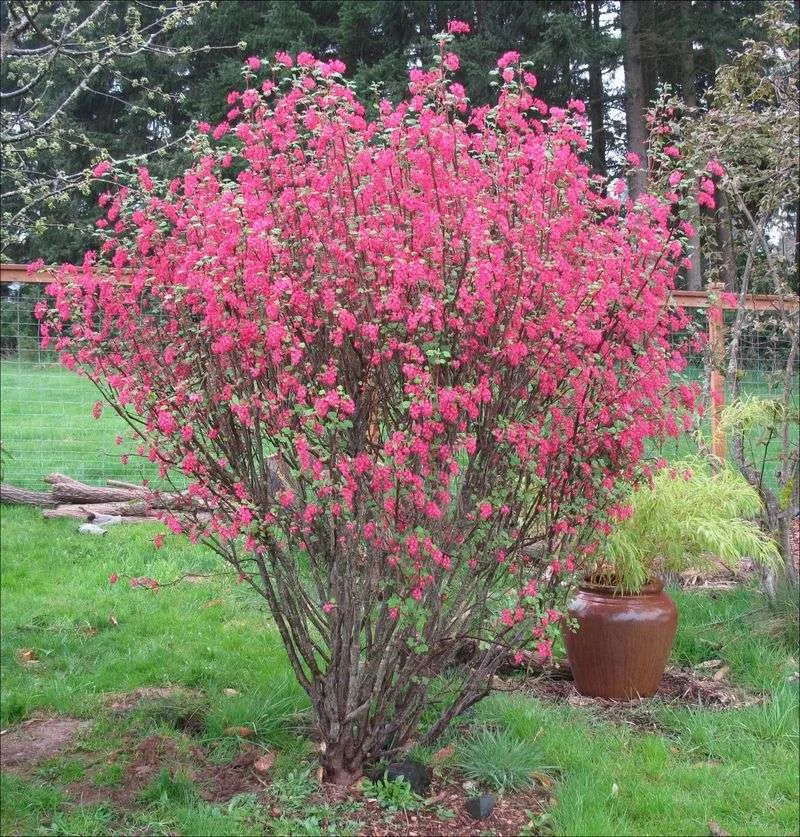
Flowering currant is a charming shrub known for its hanging clusters of pink or red flowers. These early spring blooms bring a touch of color to gardens, attracting pollinators with their nectar.
Flowering currant is perfect for informal gardens or naturalistic settings.
They thrive in well-drained soil and full sun to partial shade. Minimal care is needed, making them ideal for low-maintenance gardens.
Pruning after flowering helps maintain their shape and encourages more blooms. With their colorful flowers and wildlife appeal, flowering currants are a delightful addition to any garden seeking a natural, untamed look.
Serviceberry
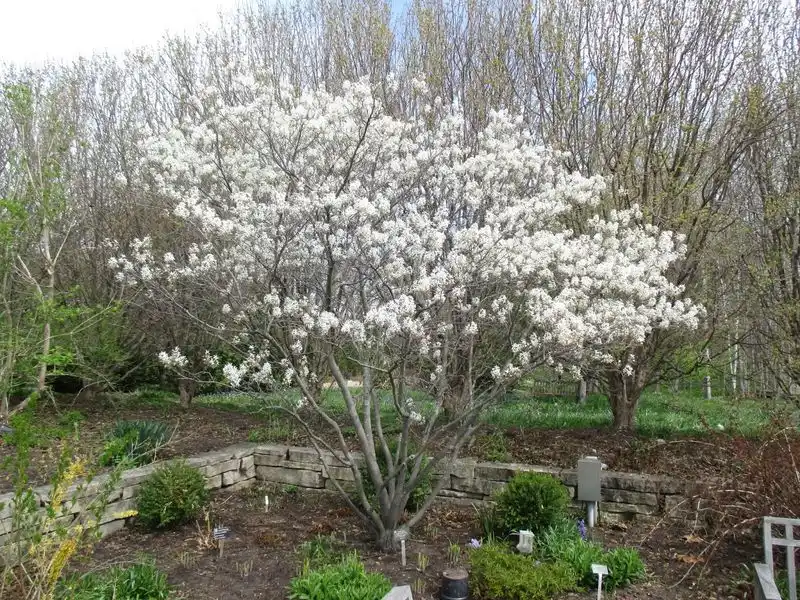
Serviceberry trees are valued for their delicate white flowers and multi-season interest. Blooming in early spring, they provide a subtle elegance to gardens, followed by edible berries loved by birds.
Serviceberries are ideal for naturalistic or woodland gardens.
These trees thrive in well-drained soil and full to partial sun. They require minimal maintenance, making them a practical choice for busy gardeners.
Their attractive foliage turns vibrant shades in autumn, offering year-round appeal. With their delicate blooms and ecological benefits, serviceberry trees are a compelling choice for gardeners wanting a harmonious blend of beauty and function.
Mountain Laurel
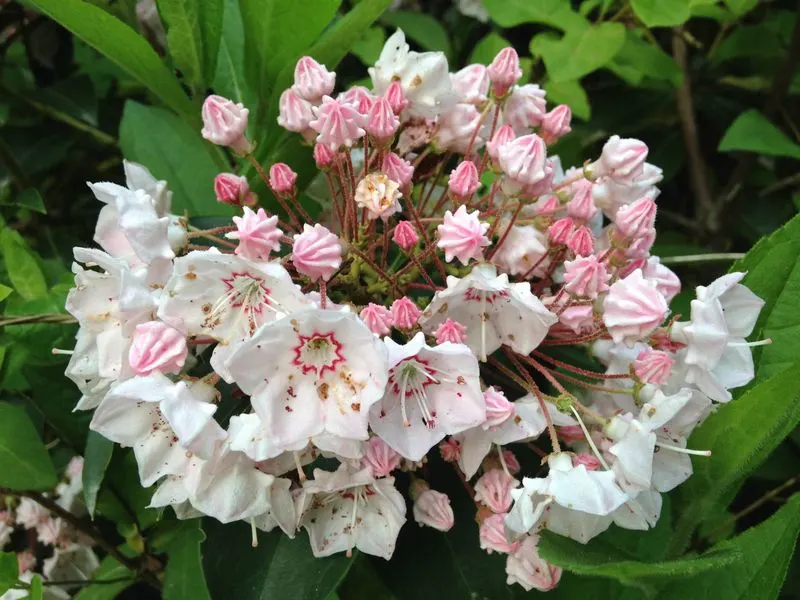
Mountain laurel is a stunning shrub known for its clusters of pink and white flowers. Blooming in late spring, it brings a touch of elegance to gardens.
This evergreen shrub is ideal for woodland or mountainous garden settings.
Mountain laurel thrives in acidic, well-drained soil and dappled shade. Regular mulching and watering help maintain its health.
Pruning after flowering encourages more blooms. Its attractive flowers and glossy leaves make mountain laurel a standout choice for gardeners seeking to add a touch of sophistication to natural landscapes.
Oleander
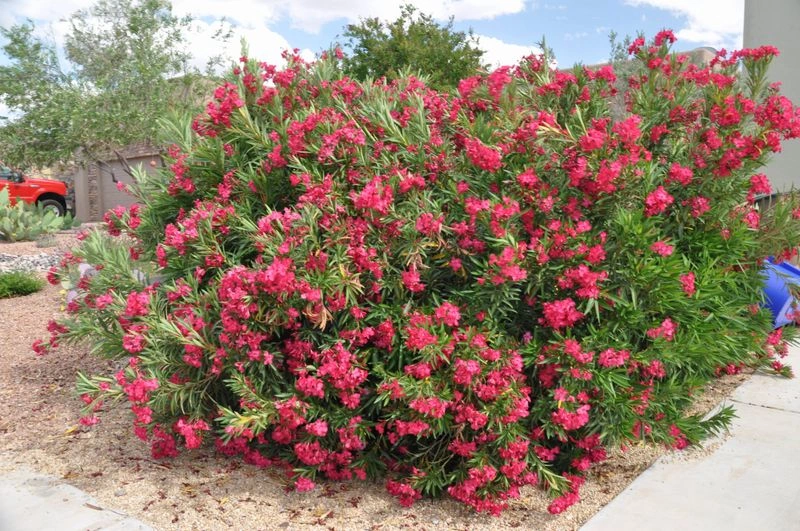
Oleander is a versatile shrub known for its vibrant blooms and tolerance to heat and drought. With flowers in shades of pink, red, and white, oleanders add a Mediterranean flair to gardens.
They are ideal for hot, sunny climates and require minimal care.
Oleanders thrive in well-drained soil and full sun, making them perfect for borders, hedges, or container plantings. Regular pruning helps maintain their shape and encourages more blooms.
While beautiful, oleanders are toxic if ingested, so caution is advised. Their striking flowers and hardy nature make oleanders popular choices for Mediterranean-inspired gardens.
Hibiscus
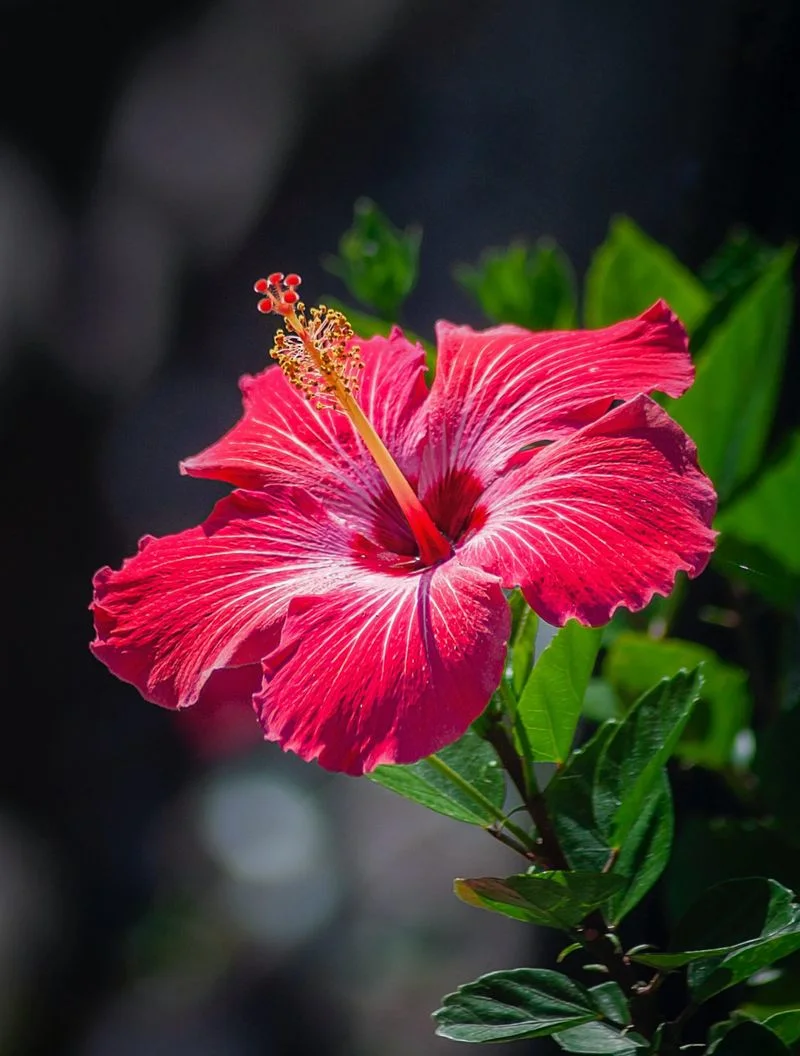
Hibiscus is a tropical shrub celebrated for its large, vibrant flowers. Blooming throughout summer, it adds a touch of the tropics to gardens.
Hibiscus flowers come in various colors, including red, pink, and yellow, attracting pollinators with their nectar.
These shrubs prefer well-drained soil and full sun to thrive. Regular watering and fertilization ensure continuous blooms.
Hibiscus plants can be grown in containers or as part of tropical-themed gardens. Their bold, eye-catching flowers make hibiscus a favorite for gardeners wanting to create an exotic, paradise-like atmosphere in their outdoor spaces.
Redbud
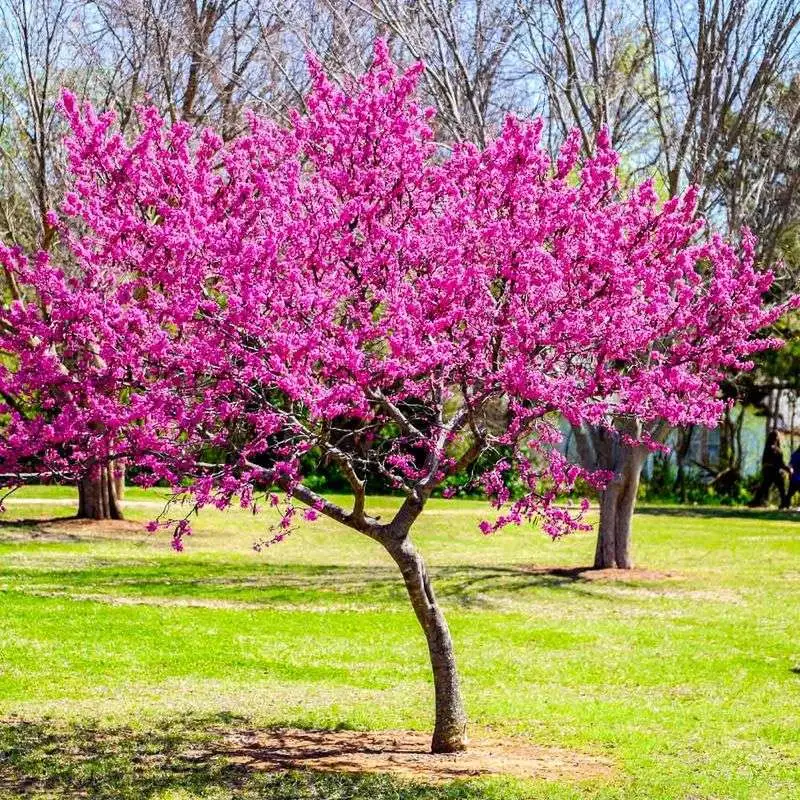
Redbud trees are cherished for their vibrant pink or purple blossoms that appear in early spring. These small trees add charm and color to gardens, often blooming before the leaves emerge.
Redbuds are perfect for small to medium gardens, offering seasonal interest.
They thrive in well-drained soil and full sun to partial shade. Minimal maintenance is required, making them ideal for busy gardeners.
Their heart-shaped leaves turn yellow in autumn, providing multi-season appeal. With their stunning blooms and easy care, redbud trees are a delightful addition to any garden seeking vibrant spring color.
Pieris Japonica
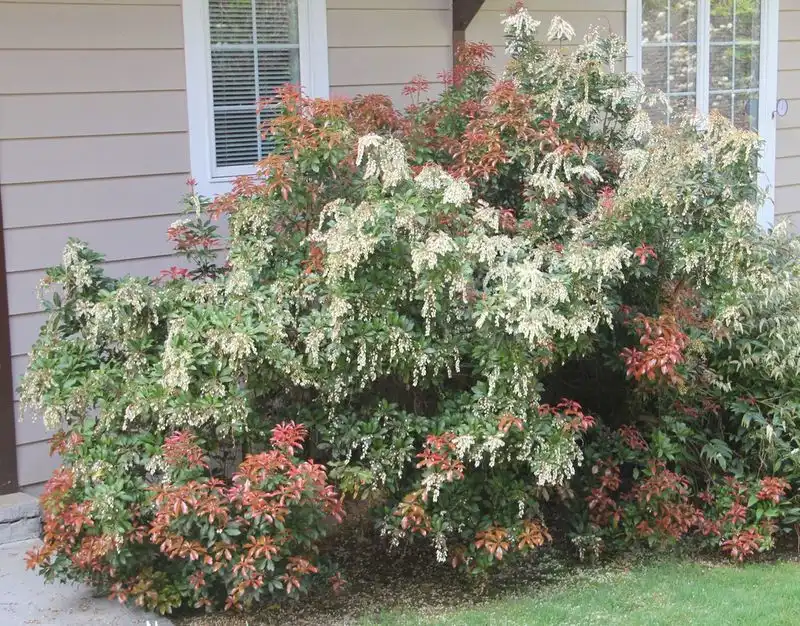
Pieris japonica is an elegant shrub known for its cascading clusters of white flowers. Blooming in early spring, it brings a touch of grace to gardens.
This evergreen shrub is perfect for Japanese gardens or shaded garden borders.
They thrive in acidic, well-drained soil and partial shade. Regular watering and mulching help maintain their health.
Pruning after flowering encourages more blooms. With their delicate flowers and evergreen foliage, pieris japonica adds year-round interest and tranquility to gardens, making them a favored choice for gardeners seeking serenity and beauty in their outdoor spaces.

